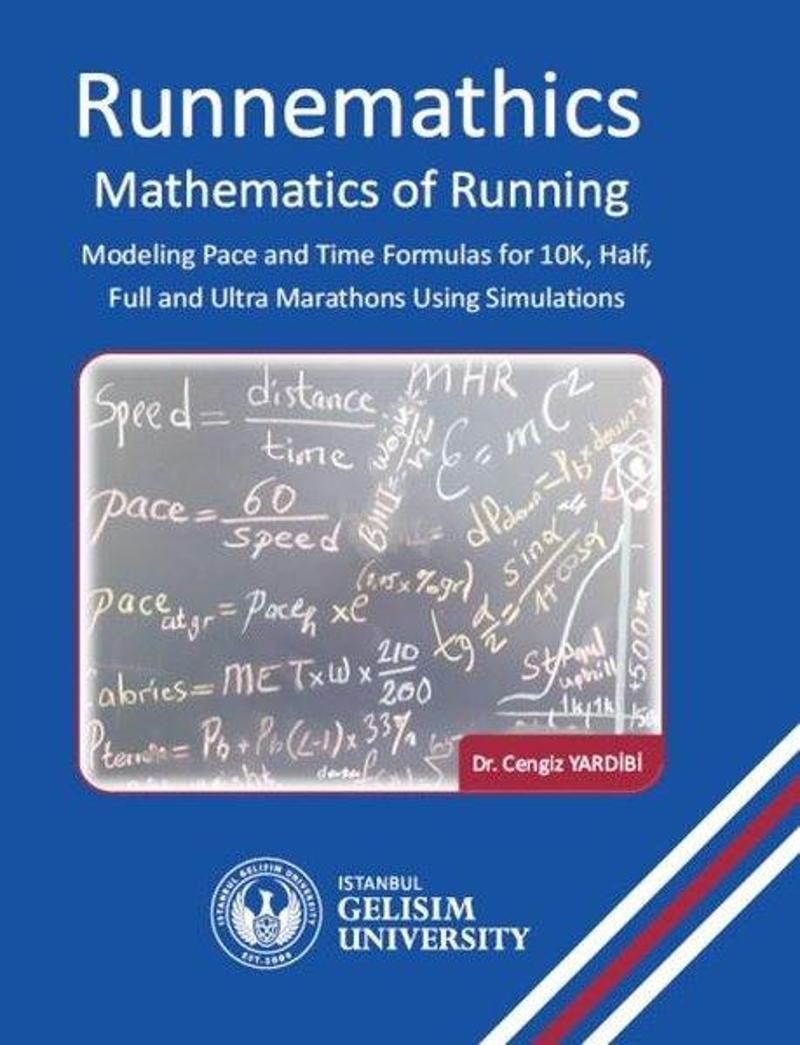Kargo Bilgileri
Ürün Özellikleri
İmzalı Kitap
HayırYazar
Cengiz YardibiKitap Formatı
CiltsizBasım Dili
İngilizceİlk Baskı Yılı
2023Kitap Seti
HayırDiğer Satıcılar
Tümü (1)Reflecting on my life-long academic journey, spanning five different universities, five different technical areas, three masters and one PhD degrees, I can easily say that the three areas that I utilized most have been “Mathematics”, “Sports-especially running” and “Foreign Languages”. Mathematics is essential to our everyday lives in the sense that automated mathematical modelling and simulation of dynamical systems is essential to the real-time control of all systems (Melin & Castillo, 1998b). Perhaps more than any other area, RUNNING is the perfect candidate for exploiting sophisticated mathematical models for modeling and optimizing outcomes.
We can become faster, happier and healthier runners by practicing on a daily basis, cross training, hydrating well, eating right and sleeping well. However, developing optimal running strategies can only be achieved by race simulations, mathematical models taking into account environmental variables such as weather temperature, rain, humidity, altitude, slopes and running surface topologies. With longer engagements, such as full and ultramarathons where a runner will be exposed to a wide range of different terrain conditions and routes, this becomes especially critical.
Running on paved streets or similar smooth surfaces generally does not require as much planning or modeling and one can rely on basic running strategies considering running at a pace, maintaining a certain number of steps per minute, negative splits, conserving energy and so on would be enough.
However, each ultramarathon has its own unique features. Some cover very long distances while others require lots of climbing depending upon the distance you will run. For each ultra you may register for different distances, starting normally from 42.2 km up to 256 km. For instance, İznik Ultra Marathon has six events but actual ultra-routes are 55km, 90 km and 160 km. Erciyes Ultra Skytrail has actually one ultramarathon which is 64 km distance but while ascending and descending an extra 6 km (10% more) throughout the race. Therefore, total distance covered, both horizontal and vertically, should be taken into account.
In addition to running calculations and strategies, one also has to model water consumption and electrolytes, sodium, potassium, magnesium balances, and how much calories have to be replenished. Based on these calculations, one will have to pack your backpack and make appropriate amounts of logistics loading at control points.
By modeling running in the form of equations and then solving them, we can predict the optimal strategy to run a specific race in the shortest amount of time. Scientific methods and modeling approaches may give the optimal solution theoretically, but this might be very hard for ordinary runners in regards to collecting data, modeling and learning something from that outcome.
So, in this book, instead of complex, lengthy and academic modeling approaches, a simple simulation application has been developed, using the Visual Basic Application (VBA) in Excel.
(Tanıtım Bülteninden)
Neden idefix?
Siparişinizi teslim aldığınız tarihten itibaren 14 gün içinde iade edebilir, iade sürecinin tamamlanmasının ardındansa ödemenizi hızla geri alabilirsiniz.
Kullanıcı dostu ara yüzümüz tüm ihtiyaçlarınıza eksiksiz yanıt verebilmek için tasarlandı. Deneyiminizi uçtan uca kusursuz kılmak adına çağrı merkezimiz ve canlı destek hattımızla ihtiyaç duyduğunuz her anda yanınızdayız!
Siparişlerinizin bir an önce ulaşması için sabırsızlandığınızın farkındayız. Sunduğumuz farklı teslimat seçenekleri arasından size en uygununu belirlemeniz, siparişinizi olabildiğince çabuk veya dilediğiniz zaman aralığında sorunsuz bir biçimde teslim etmemiz için yeterli.
